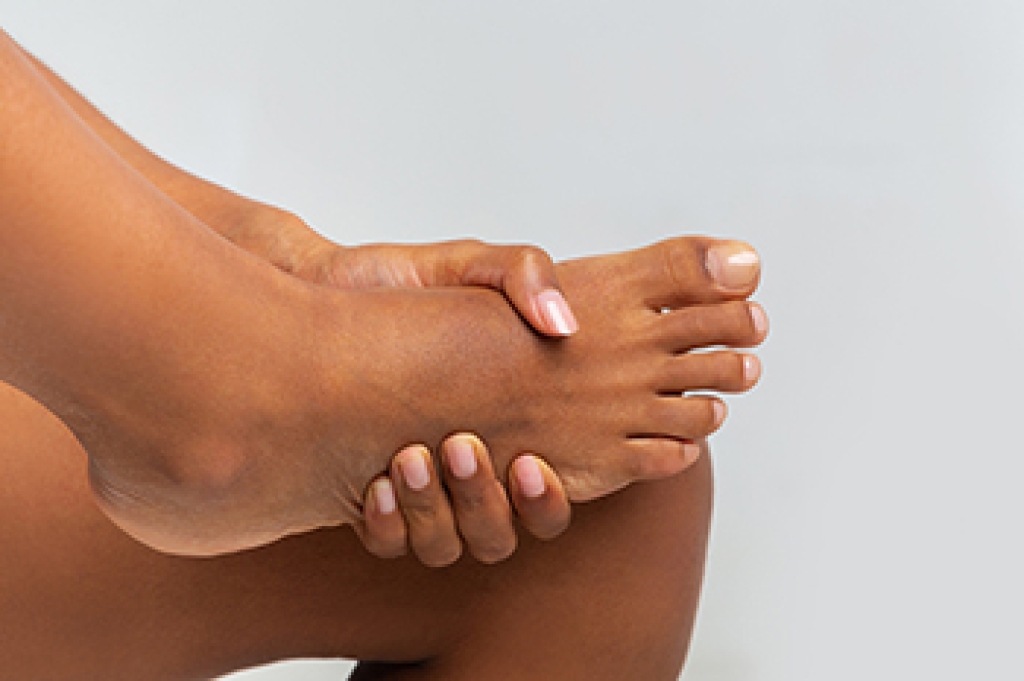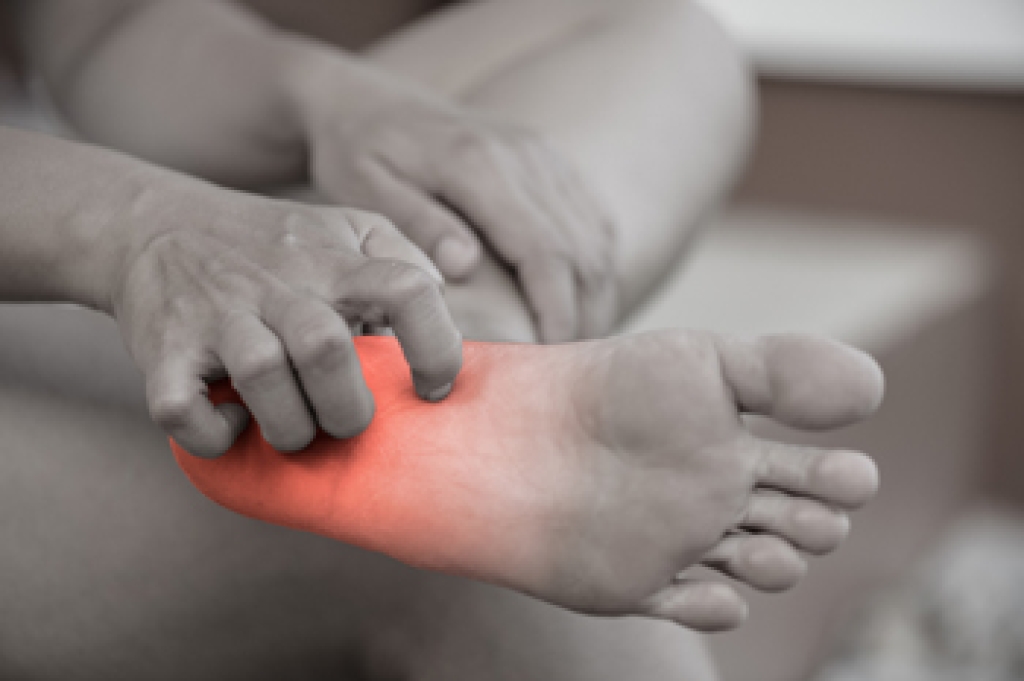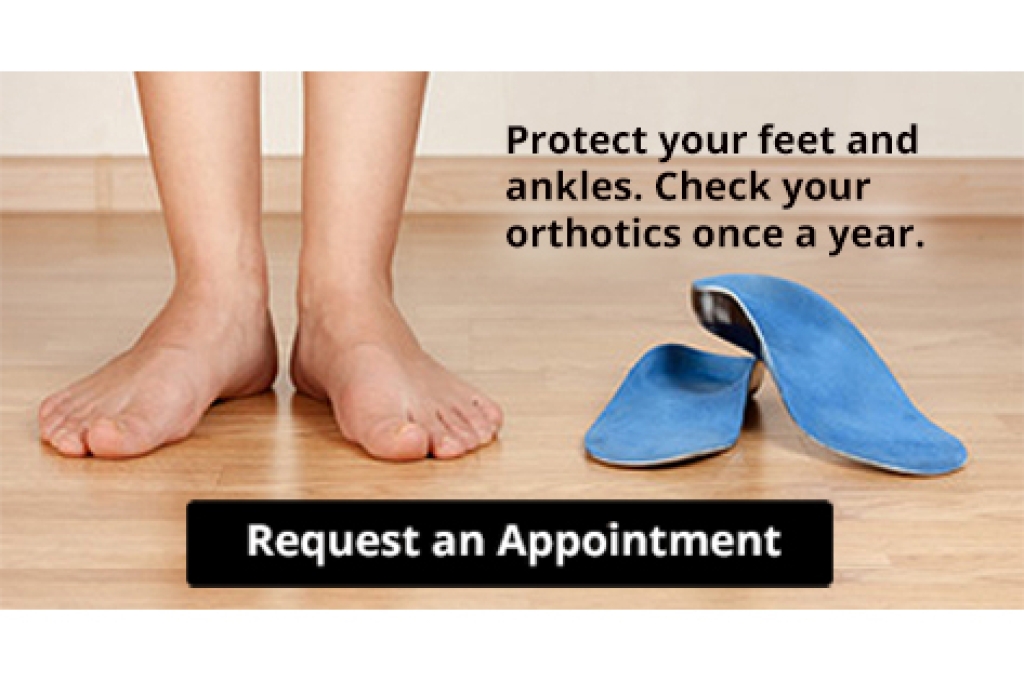
The foot bears the weight of the entire body with every step taken. Most foot sprains occur in two main areas, the midfoot, which includes the arch, and the 1st metatarsal joint, which is the base of the big toe. Midfoot sprains are generally the result of a sports-related fall or collision. Another cause of a midfoot sprain is the twisting of the area common among snowboarders, windsurfers, and divers. Ballet dancers and horseback riders are also at a higher risk for midfoot sprains. The joint at the base of the big toe, known as the MPJ or metatarsophalangeal joint, is the site of a sprain often called turf toe. It is the result of the repetitive action and sudden burst of energy that causes the ligaments in this joint to become overstretched. This type of MPJ sprain is common among football players and ballet dancers. Symptoms of a foot sprain are pain, swelling, and tenderness. Some bruising may also take place, and with serious sprains, bearing weight becomes difficult. For guidance on how to deal with sprains in the foot, please consult a podiatrist.
Foot Pain
Foot pain can be extremely painful and debilitating. If you have a foot pain, consult with Dr. Castillo from Bronx Foot Care. Our doctor will assess your condition and provide you with quality foot and ankle treatment.
Causes
Foot pain is a very broad condition that could be caused by one or more ailments. The most common include:
- Bunions
- Hammertoes
- Plantar Fasciitis
- Bone Spurs
- Corns
- Tarsal Tunnel Syndrome
- Ingrown Toenails
- Arthritis (such as Gout, Rheumatoid, and Osteoarthritis)
- Flat Feet
- Injury (from stress fractures, broken toe, foot, ankle, Achilles tendon ruptures, and sprains)
- And more
Diagnosis
To figure out the cause of foot pain, podiatrists utilize several different methods. This can range from simple visual inspections and sensation tests to X-rays and MRI scans. Prior medical history, family medical history, and any recent physical traumatic events will all be taken into consideration for a proper diagnosis.
Treatment
Treatment depends upon the cause of the foot pain. Whether it is resting, staying off the foot, or having surgery; podiatrists have a number of treatment options available for foot pain.
If you have any questions, please feel free to contact our offices located in Bronx, NY Yonkers, NY . We offer the newest diagnostic and treatment technologies for all your foot care needs.




